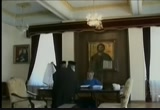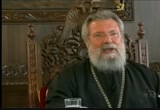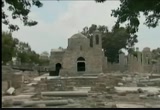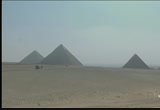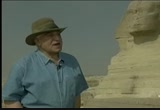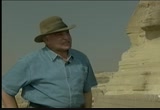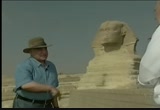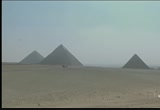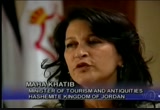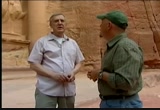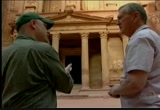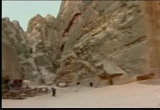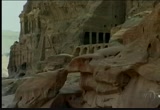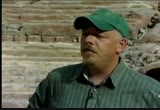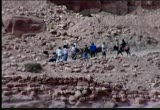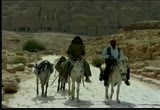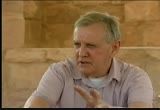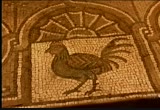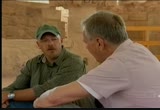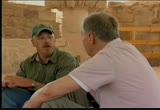tv This Is America With Dennis Wholey WHUT January 1, 2012 10:00am-10:30am EST
10:00 am
>> "this is america" visits the agent world. on this program, we will visit the pillar of st. paul in the cypress, petra in jordan and the pyramids in egypt. don't go away. >> "this is america" is made possible by the national education association, the nation's largest advocate for children and public education. the american federation of teachers, a union of professionals. the singapore tourism board -- there is something for everyone.
10:01 am
singapore airlines, a great way to fly. poongsan corporation, forging a higher global standard. the rotondaro family trust. the ctc foundation. afo communications. and the american life tv network. >> one of the most important sites in cyprus is the pillar of st. paul. the bible says paul was tied to this pillar and whipped for preaching christianity. this location represents the first significant presence of christianity in europe. before visiting the pillar of st. paul, i spoke with the archbishop of cyprus to
10:02 am
understand the importance of st. paul's visit to cyprus. what do we know about st. paul and cyprus? >> the church of cyprus is the first church founded by saint paul in 4580. when he came to cyprus, he was not an apostle. he became an apostle in cyprus and the mission in cyprus was barnabas and not paul. in cyprus, with his speech, his first miracle that he did, he succeeded to make christian the roman governor who had been seated and he became an apostle and changed his name to paul. he became the apostle of the nation's.
10:03 am
so he became the leader of the mission and the relations of paul with cyprus are very close and because he made the people of cyprus to become christians and he baptized the first governor. so it became the gate to christianize europe. >> after speaking with his beatitude, the archbishop, we traveled west to visit the pillar of st. paul. our separate guide our separate guide gave us some information about this wonderful, historic site. >> we are now in a very historic spot. tell me. >> we are. imagine that here, behind us, we have 2000 years almost of christianity, beginning of
10:04 am
course with the apostle paul and where, on this pillar, as the bible says, he was whipped in 4580 when he came here preaching christianity. of course, he managed to convert the roman consul to christianity and cyprus became the first country in the world to be ruled by a christian. but christianity became the official religion in the fourth century. you can see behind us the largest and oldest church in cyprus, built in the fourth century. you see these marble columns and the mosaic floor, an incredible building, destroyed in the seventh century. later, when the crusaders came here, they built the church behind us, the gothic architecture, in the 13th century. when that was destroyed, the one
10:05 am
you see behind us now was replaced the -- will replace it. since then, it is used by everybody here. catholics, protestants, orthodox. it is incredible what is happening at this moment here. >> we have just returned from cyprus, a wonderful country with an amazing 12,000-year history and, sad to say, it is a divided country today. we had a unique opportunity to talk with some of the country's senior leaders and visit some of its most spectacular and historic sites. keep an eye out for three very special programs -- "this is america" visits the republic of cyprus. in cairo, egypt, we had the once
10:06 am
in a lifetime opportunity to visit the pyramids. >> we are in the area of the sphinx. the giza plateau has the magic of egypt. when you come to egypt and you come for the first time and stand in front of the pyramid and look at it, people wonder how the pyramid was built, why it was built, and i have been reading the secrets of this pyramid for the last 35 years. >> who was kfou? >> he was the second king and ruled egypt about 4500 years ago. he was married to three ladies. the pyramids located to it east -- he was a wise man and he built the great pyramid.
10:07 am
people wonder about this pyramid. we do have over 100 pyramids, one of them was just found about four months ago. but for the great pyramid, people wonder about this all the time and think how this pyramid can be built. >> what is the definition of a step pyramid? >> the step pyramid is built by steps. they start with one and they add five more steps. the king -- these are the stairs sticking will take to happen. part of the function of pyramids -- i always say pyramids built egypt because building the pyramids meant the egyptians knew about art, architecture, at -- astronomy and technology. we found the tombs of the pyramid builders that can tell us about the builder of the pyramid. if you come to this, you know
10:08 am
about the kings and queens, you never know about the ordinary egyptians that built the pyramids. that discovery is one of the most important discoveries in egypt. >> as many as 20,000 people were involved? >> 10,000. >> i keep reading a different numbers. >> you read different numbers in books and people have not been involved working in the pyramids. >> they are not slaves, are they? >> no. the discoveries of the tombs of the builders prove there are not slaves because they are buried inside the pyramids. >> where the rocks come from? >> all of the stones came from a quarry located next to the second pyramid. but the casing, the limestone that you can still see at the top of the pyramid came from a quarry location about 3 miles to
10:09 am
the east of here. >> where are we right now in relationship to the nile river? >> we are located west of the nile about 4 miles away. there was a canal, i did discover this canal, connecting at the nile with the pyramids. for the egyptians to bring non- local tools like granite and fine limestone, they had to bring all of it through the nile and there was a canal connecting the nile with the pyramids and that is why the nile was important to the ancient egyptians. >> the weight of the stones for was from half a ton to 2 1/2 tons. they cut into solid rocket made the base of the pyramid -- cut into solid rock to make it the base of the pyramid.
10:10 am
they have ramps around the pyramid and built the up and after they fill it, they move all of the ramps away. the great pyramid was for kofu and his son. the third is for the grandson. >> so this is a family affair? >> exactly. beside them, you will see the tombs of queens and to the east, the tombs of the children and nobles. to the west, the tombs of the officials who helped the king in his lifetime. this is the community, all of these people together will enjoy their life in paradise with the king. the quest for immortality built egypt. >> what knox you out about the whole thing? what blows you away? >> i lived in this place, i lived in this house in front of
10:11 am
the great pyramid. what is amazing about this place is every day, when i come here, i see the pyramids different from yesterday. that is the magic of the pyramids. >> how has this thinks weathered the last 3500 years? >> the sphinx suffered a lot. the major destruction of the sphinx became because of the bad restoration more than water, more than humidity and heat. because people all the time used cement to restore the sphinx. the mother wrote rock of this is completely deteriorated, then they come and put stone and used cement. cement can eat into the sphinx. in 1988, the sphinx lost its right shoulder. that was one year after i came from the states. it was like a red flag to
10:12 am
everyone. i stayed at 10 years restoring the sphinx, taking the cement out and putting the stones based on old photographs and now i can say the sphinx is the oldest sick person on earth. we have to be near the sphinx all the time and we restore the sinks every year. i am committed to the preservation of the monuments. like i built the wall to protect the pyramids. two months from now, you will never see horses and cars -- how can you believe people can park their cars in front of the pyramids. this will never happen anymore. this is the dream of my life. i will finish it and i will feel i am protecting the pyramids. >> thank you very much for the education. >> thank you. >> the minimum drive to petra is
10:13 am
a full day if you just want to see one-tenth of it. maybe less. it is amazing and continues to surprise you at each and every station. >> today, we visit the ancient city of petra in jordan. we will take a tour of the site with an archaeologist and associate director of the american center for oriental research in jordan. patrick is an ancient city of ruins of located in jordan -- petra is an ancient city located in jordan. to enter the city, you walk through a cut in the mountain. this ancient city is surrounded by mountains in the middle of the desert and was built more than 2000 years ago by a group called the nabatians.
10:14 am
what do we know about a group of people who established this city? >> the very little. >> we do not know that name -- >> we don't even know where the term originates. it first appears in greek, in historical writings in rome at the end of the first century bc. that is literally the first appearance and this is their capital city. thisyou would arrive in plaza known as the treasury, but in fact it is not a treasury. it is a bad one name -- it is b aedouin name. they did not know who could have made of these monuments and so
10:15 am
they thought it must have been egyptians. it is actually the temple and tomb and would have looked very dramatic as you came out and stood here and saw this over your head. there is a massive central staircase that led to about where we're standing to the entrance and it would have been painted in bright colors. it would have had a coating of white plaster and all of the details and figures would have been in bright colors. >> how old might this be? >> if it was finished in last 25 years of the last century bc, we are talking about 2000 years. >> is the architecture greek or roman? >> it is what we call hellenistic. the closest parallel is the architecture from alexandria. the iconography is very greek or
10:16 am
greco-egyptian. the symbol do you see perched on the pediment is the crown of isis. the figure of the central round portion is isis holding a cornucopia. on each side are dancing figures and a winged figure and lord out wewh have at was probably a medusa face surrounded by vegetation. on each side of that, there are a wing at plans phasing out and images of abundance. all of the faces have been chiseled away. that was done intentionally and we don't know who did that, if it was the later iconoclastic christians or iconoclastic muslims. asuryreng from the treasavury further into petra, the magnitude of the site is
10:17 am
overwhelming. buildings and mountains blend together. it is easy to see and experience why pasetra hur become one of today's great tourist destinations. >> we are in the middle of the desert. we are in the middle of the desert and we are in petra. does the word have significance? >> it does. it is the greek name for the city and it actually means rock. the nabatian name was a different. it's variously translated but we believe it comes from the roots of the irrigation. in both cases, the name for the city seems to have been given by the environment. for the greeks, it is rock, for the people who live here, and may be colored bending of the stone. >> who worknabatians?
10:18 am
>> it they were arab people, hellenistic people and created a kingdom in the region. >> how many people are we talking about? >> we don't really know. at the height of the city we will see in a few minutes, we estimate about 30,000 people could have lived here. >> in this area? >> in this desert. >> how big an area is petra? >> the city itself is several kilometers square. the park that encompasses the largest -- the larger square is over 264 kilometers. >> scientists, especially american scientists, have been working with the jordanian institutions, both government and academic uncovering the history of petra. one of the most dramatic examples of their work lies in the us cities center. >> we are now overlooking the
10:19 am
brown university tumble project which was worked over 17 years. when the project began, the original level of soil deposit was at the height of this tree. if you look at look down, you get a sense of how much soil and rubble and stone had to be moved to uncover this monument. >> this is one of the most fascinating projects. this is a large public garden in the middle of the summer, they could have a large pool. what you see partially excavated is an island with a pavilion that sat on this gigantic pool with gardens in front of it, trees, bushes and flower beds. they had enough water to do this. about the're talking excavation of a large area like this, who is doing the work under your supervision? >> one of the great advantages of this project is it provides
10:20 am
employment for the local folks. every year, we hire between 30 and 70 workers from the local village and they work with us for the 10-week seasons. this is all under the direction of the doctor at brown university. she worked very hard to create jobs for the local community. we're now standing outside of little petra, a suburb of the main city which supports the main city. we have a collection of ritual dining areas for the people who lived in this suburb village. insi aittle e petra is a monument known as the painted house. it was long lost to the modern era because of damage caused by smo human activities in the cave. itasow restored and b is the most unique bit of temper a painting that has ever been found in the ancient area.
10:21 am
>> the whole business of archaeology, what is it? >> archaeology is the x -- is the examination of the past by excavating the duchess of human occupation. we love dumps because we can reconstruct people's history. >> what is your role? >> that work for the american center of oriental research which is one of the overseas american research centers. i manage projects, we do field work and a lot of preservation and restoration. we help with tourism development projects in the park. we did this excavation, the byzantine church and cathedral of petra built sometime in the late for hundreds or early 580 -- early 05 hundred s d.a. >>rehe woeshe the christian
10:22 am
church into the history? it seems kind of late. >> this is long after the roman annexation in 680. the city continued to be a mitropoulos until the 600. after the roman empire converts to christianity with konstantin in 338 b, we see the city's in the middle east start to build churches within 150 years. so we see a large, thriving christian community right up until the early 600. >> now we are in this byzantine church. with talked about the treasury and the temple, which is a marvelous piece of work. in this business of archaeology, how much is digging and uncovering things and once you have uncovered things, how much is a restoration of what you think you have found? >> that is a good question. in petra, it's a difficult
10:23 am
process. with sandstone, we face a lot of problems. it is fragile and decomposes easily when exposed to the elements. we have to weigh all the options. do we uncover stuff just for the sake of uncovering it to make it visible for the tourists or are we actually answering scientific questions? >> you have come upon tombs and temples. you have come upon the church here and you have come upon the treasury, which is a tune as well. what are you looking for? >> what is the holy grail? everybody has their own agendas. my personal one is -- there are several. i would like to find the marketplace. i would like to find a caravan, actual evidence of this city's participation in trade. we don't actually have any
10:24 am
evidence of trade on the ground to show how worked. >> we know that this was a hotel in a way? but we don't know the trading happened right here? >> i would love to find evidence of how that happened. the second really valuable thing to find would be, they were incredibly literate people. it is one of the most polyglot society as we have evidence of. they could speak multiple languages and write multiple languages. we know this from inscription all the evidence, the things car on walls. but we do not have any text -- things carved on walls. >> how long have you been working on this site? >> six years. >> will you continue here? >> god willing. i will spend the rest of my life working here. there will come a day that
10:25 am
petras not here anymore. it is sandstone and it will disappear. the best thing we can do is try to keep consciousness alive about the importance of this site and get support from continued work to document and educate and record everything we can about the site before it will disappear. not in your lifetime or my lifetime or the lifetime of our great, great grandchildren. but sunday, it will be gone. because we do not have the sources, everything we are going to know at this point is through archaeology. >> thank you. >> thank you for coming to jordan and visiting petra. >> for online video of all "this is america" programs, visit our website, thisisamerica.net. >> "this is america" is made possible by the national
10:26 am
education association, the nation's largest advocate for children and public education. the american federation of teachers, a union of professionals. the singapore tourism board -- there is something for everyone. singapore airlines, a great way to fly. poongsan corporation, forging a higher global standard. the rotondaro family trust. the ctc foundation. afo communications. and the american life tv network.
198 Views
IN COLLECTIONS
WHUT (Howard University Television) Television Archive
Television Archive  Television Archive News Search Service
Television Archive News Search Service 
Uploaded by TV Archive on

 Live Music Archive
Live Music Archive Librivox Free Audio
Librivox Free Audio Metropolitan Museum
Metropolitan Museum Cleveland Museum of Art
Cleveland Museum of Art Internet Arcade
Internet Arcade Console Living Room
Console Living Room Books to Borrow
Books to Borrow Open Library
Open Library TV News
TV News Understanding 9/11
Understanding 9/11

